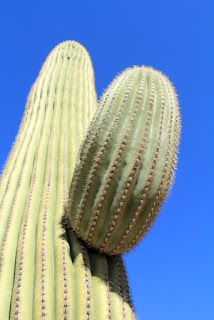The US side of Nogales is the only US town to ever be adopted by the State of Oklahoma. When they were filming the movie Oklahoma, the movie producers could not find a town in Oklahoma that looked like their vision of what Oklahoma should look like, so the State of Oklahoma adopted the town of Nogales in Arizona and the Oklahoma movie was filmed in and around Nogales.
Lukeville is a small boarder crossing located about 100 miles west of Nogales and is the primary boarder crossing that people use when traveling from the US to Puerto Penasco, Mexico (aka Rocky Point). Organ Pipe Cactus National Monument is located just north of Lukeville and is the only place in the United States that contains naturally occurring Organ Pipe Cactus. There are also 27 other cactus species that live in the area. Due to problems along the boarder, most of the park has been closed for the past few years, but boarder security has been increased and all roads and trails are now open.
I have always wondered why they call the community of Why, "Why?" As I was passing through Why, I discovered why - Why Not!
The community of Ajo almost became a ghost town when the large open-pit copper mine closed a number of years ago, but then the US Boarder Patrol stationed 500 agents in the area and the community had a rebirth.
It was late in the afternoon when I noted a strange cloud in the sky. Upon closer examination, I discovered it was not a cloud, but some type of extraterrestrial signal. Then, I arrived at Gila Bend, the home of 1,917 friendly people and 5 old crabs (the names of the old five are listed on a welcome sign at the edge of town).














































































































